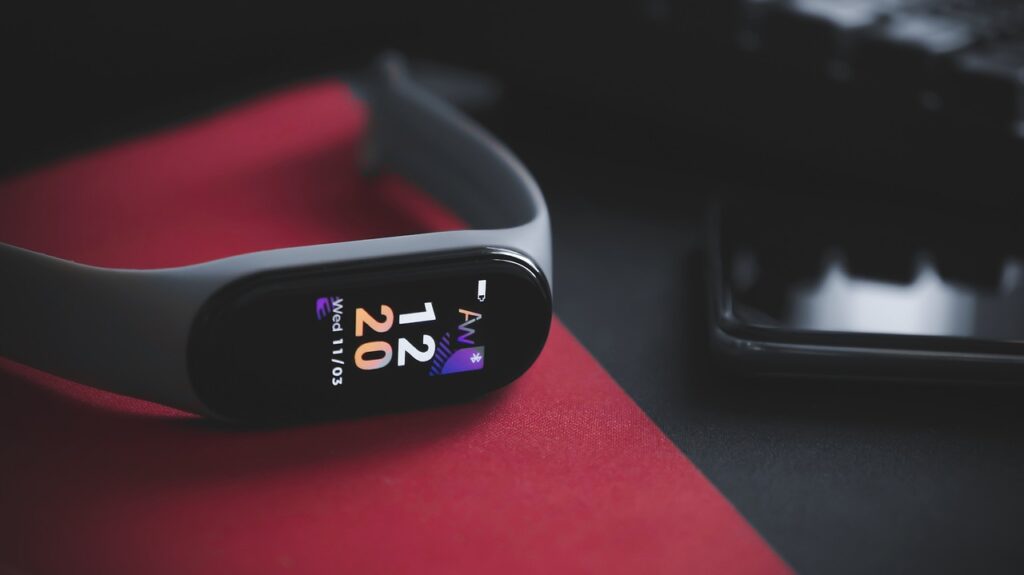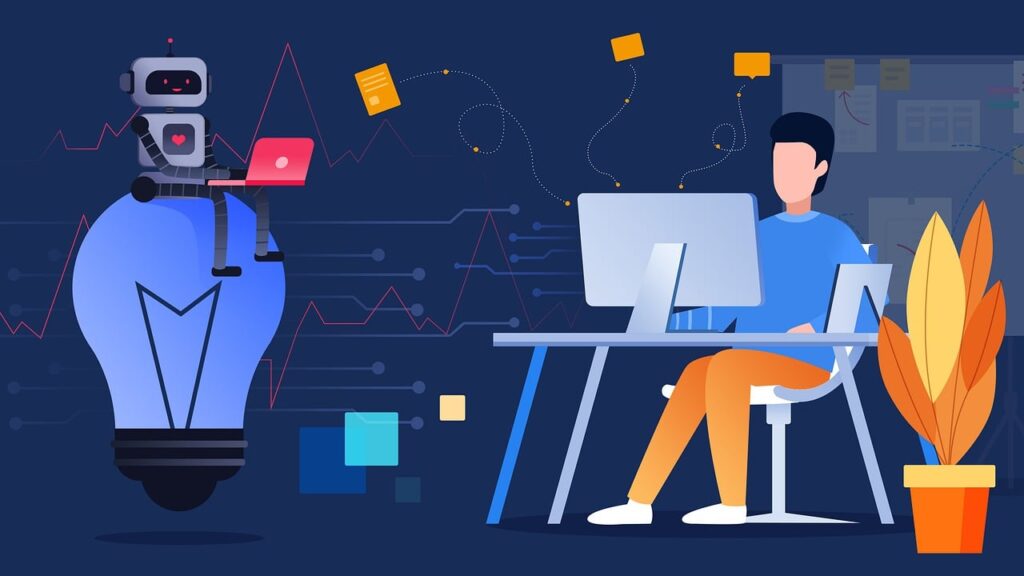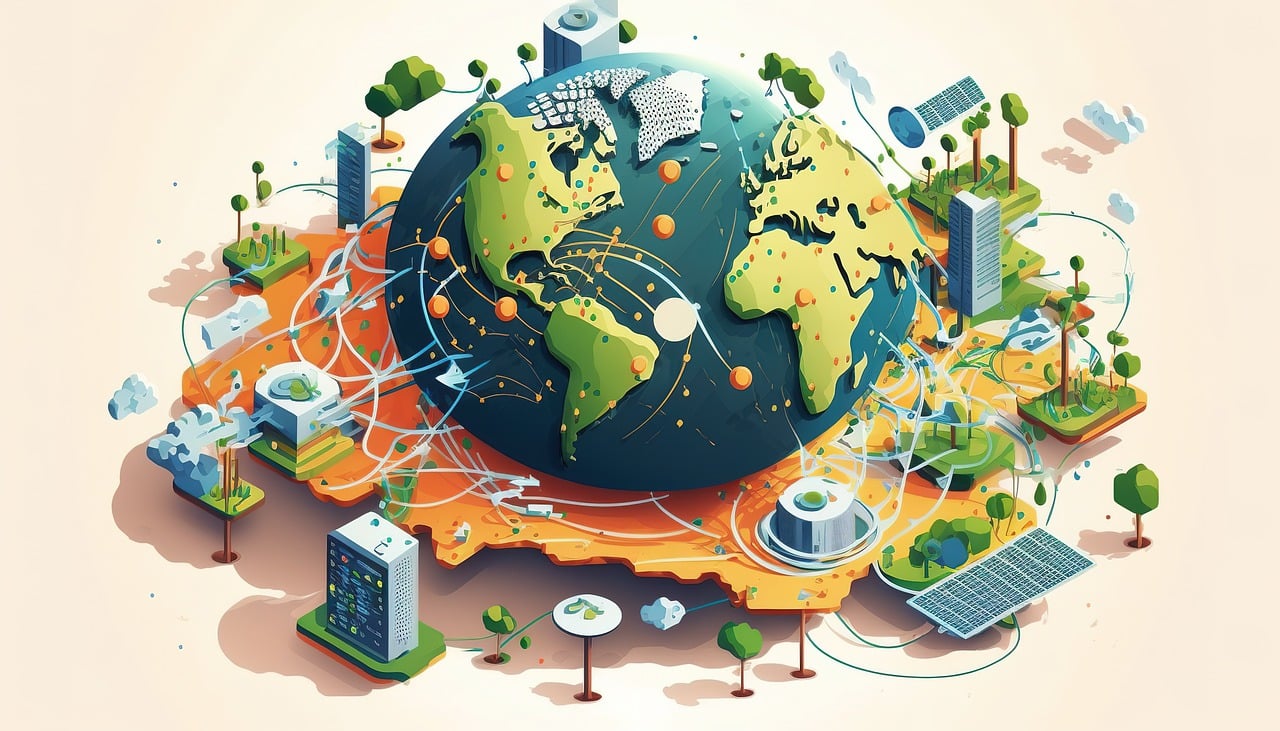Introduction
This article explores How IoT is Transforming Everyday Life : the transformative impact of the Internet of Things (IoT). We cover its fundamentals, applications in homes, health and fitness, transportation, and work productivity. We address challenges and considerations of IoT implementation and look at future trends shaping this revolutionary technology.
The Internet of Things (IoT) is rapidly transforming the way we live, with over 20 billion connected devices projected by 2023.
The Internet of Things (IoT) is rapidly transforming the way we live, with over 20 billion connected devices projected by 2023. IoT refers to the interconnected network of devices that communicate and exchange data, enhancing various aspects of our daily activities. Understanding IoT’s impact is crucial as it reshapes our homes, health, transportation, work, and more.
Understanding the Internet of Things (IoT)
Definition of IoT
The Internet of Things (IoT) is a system where physical objects are embedded with sensors, software, and other technologies to connect and exchange data with other devices and systems over the internet. This network of interconnected devices can range from everyday household items to sophisticated industrial tools.
Overview of IoT Technology and Its Components
IoT technology consists of several key components: sensors that collect data from the environment, connectivity modules that transmit data, data processing units that analyze the collected data, and user interfaces that allow interaction with the system. These components work together to provide real-time insights and automation capabilities.
Examples of IoT Devices Commonly Used in Daily Life
IoT devices are increasingly integrated into our daily lives. Common examples include smart home devices like thermostats, lighting systems, and security cameras; wearable fitness trackers and health monitors; connected cars that provide real-time traffic updates; and smart office equipment that enhances productivity.

IoT in the Home
Smart Home Devices
Smart Thermostats: These devices learn user preferences and adjust heating and cooling systems automatically, leading to energy savings and enhanced comfort.
Smart Lighting: IoT-enabled lighting systems can be controlled remotely, set to schedules, and adjusted based on occupancy, improving energy efficiency and convenience.
Smart Security Systems: These systems include cameras, doorbells, and sensors that provide real-time alerts and remote monitoring, enhancing home security.
Benefits of IoT in the Home
Convenience and Automation: IoT devices automate routine tasks, allowing users to control various aspects of their home environment through smartphones or voice commands.
Energy Efficiency and Cost Savings: By optimizing energy use, IoT devices help reduce utility bills and contribute to environmental sustainability.
Enhanced Security and Safety: Real-time monitoring and alerts from IoT security systems increase home safety and provide peace of mind.
Case Studies of Smart Homes Several homeowners have reported significant benefits from adopting smart home technologies. For example, a family in California installed smart thermostats and lighting systems, resulting in a 20% reduction in their energy bills. Another case involved a homeowner in New York who prevented a burglary thanks to real-time alerts from their smart security system.

IoT in Health and Fitness
Wearable Devices
Fitness Trackers: These devices monitor physical activity, heart rate, sleep patterns, and more, providing users with insights into their health and fitness levels.
Smartwatches: Beyond fitness tracking, smartwatches offer notifications, GPS tracking, and various health-related applications.
Health Monitoring Devices: Devices like blood pressure monitors and glucose meters provide real-time health data and can alert users to potential health issues.
Benefits of IoT in Health and Fitness
Real-time Health Monitoring: Continuous monitoring of health metrics allows for early detection of issues and timely interventions.
Personalized Fitness Plans: Data from wearable devices can be used to create customized fitness plans tailored to individual needs and goals.
Early Detection of Health Issues: IoT devices can detect anomalies in health data, prompting users to seek medical advice before problems escalate.
Success Stories of IoT in Healthcare
IoT devices have proven life-saving in many instances. For example, a man in Florida received an early alert about an irregular heartbeat from his smartwatch, leading to a timely medical intervention. Another success story involves a diabetic patient who uses a connected glucose monitor to manage their condition more effectively.
IoT in Transportation
Connected Vehicles
Vehicle-to-Vehicle Communication: Cars equipped with IoT can communicate with each other to share information about traffic conditions, reducing the risk of accidents.
Real-time Traffic Updates: IoT-enabled navigation systems provide up-to-date traffic information, helping drivers avoid congestion and save time.
Autonomous Driving: Self-driving cars use IoT technology to navigate and make real-time decisions, enhancing safety and efficiency.
Benefits of IoT in Transportation
Improved Safety: IoT enhances vehicle safety through features like automatic braking, collision detection, and real-time alerts.
Reduced Traffic Congestion: By optimizing traffic flow and providing alternative routes, IoT helps reduce congestion and emissions.
Enhanced Travel Experience: IoT-enabled features such as in-car entertainment, personalized navigation, and remote diagnostics improve the overall travel experience.
Examples of IoT in Modern Transportation
Cities like Los Angeles and Singapore are implementing IoT solutions to manage traffic flow and improve public transportation. In Los Angeles, IoT sensors help monitor and control traffic lights, reducing congestion. Singapore uses IoT to provide real-time updates on public transportation schedules, improving commuter experience.

IoT in Work and Productivity
Smart Office Devices
Connected Office Equipment: IoT-enabled printers, copiers, and other office devices streamline workflows and reduce downtime with predictive maintenance.
Smart Meeting Rooms: IoT systems automate room booking, control lighting and temperature, and integrate with video conferencing tools for seamless meetings.
IoT in Remote Work Setups: Remote workers benefit from IoT devices that enhance home office setups, such as smart desks and ergonomic monitoring systems.
Benefits of IoT in the Workplace
Increased Efficiency and Productivity: IoT streamlines tasks, reduces manual effort, and optimizes resource use, boosting overall productivity.
Enhanced Communication and Collaboration: IoT tools facilitate real-time communication and collaboration, enabling teams to work more effectively.
Better Work-Life Balance: IoT allows for flexible work arrangements, helping employees maintain a better work-life balance.
Real-life Applications of IoT in Business
Companies like Siemens and Cisco use IoT to optimize their operations. Siemens employs IoT for predictive maintenance in manufacturing, reducing downtime and costs. Cisco’s smart office solutions improve workplace efficiency and employee satisfaction by automating routine tasks and providing real-time data insights.
Challenges and Considerations
Security and Privacy Concerns
IoT devices collect vast amounts of data, raising concerns about data security and privacy. Protecting sensitive information and ensuring devices are secure from cyber threats are critical challenges for IoT adoption.
Interoperability and Compatibility Issues
With numerous manufacturers and standards, ensuring that IoT devices from different vendors can communicate and work together seamlessly remains a significant challenge. Interoperability is essential for the full potential of IoT to be realized.
Data Management and Overload
The sheer volume of data generated by IoT devices can overwhelm systems, leading to issues with data storage, management, and analysis. Effective data management strategies are necessary to handle this influx of information.
Cost of Implementation and Maintenance
The costs associated with deploying and maintaining IoT systems can be high, particularly for small and medium-sized enterprises (SMEs). Finding cost-effective solutions and achieving a good return on investment is crucial for widespread IoT adoption.
Examples of Addressing IoT Challenges Several companies are developing solutions to address IoT challenges. For example, cybersecurity firms like Symantec offer advanced security solutions for IoT devices. Standards organizations like the IEEE are working on developing universal IoT protocols to enhance interoperability.
Future Trends in IoT
Growth of Smart Cities
Smart cities leverage IoT to improve urban infrastructure, including traffic management, waste management, and energy distribution. The development of smart cities is expected to enhance the quality of urban life significantly.
Advances in AI and Machine Learning with IoT
The integration of AI and machine learning with IoT (AIoT) enables advanced data analytics, predictive maintenance, and autonomous decision-making. AIoT is set to revolutionize various industries by providing deeper insights and automation.
Expansion of 5G Networks
The rollout of 5G networks will provide faster, more reliable, and lower-latency connectivity, essential for the growth of IoT. 5G will support the massive scale of IoT deployments and enable new applications like autonomous vehicles and smart cities.
Increased Focus on Edge Computing Edge computing processes data closer to its source, reducing latency and bandwidth use. This approach is particularly beneficial for real-time applications like autonomous vehicles, industrial automation, and smart healthcare.
Emerging IoT Applications
Smart Wearables: The next generation of wearable devices will offer more advanced health monitoring, fitness tracking, and personalized recommendations.
Advanced Home Automation: Future smart home systems will integrate more seamlessly, offering enhanced automation, energy management, and security features.
Innovative Healthcare Solutions: IoT will continue to transform healthcare with innovations like remote patient monitoring, telemedicine, and AI-driven diagnostics.
Conclusion
The Internet of Things is revolutionizing everyday life by enhancing our homes, health, transportation, work, and more. While IoT presents several challenges, ongoing advancements and future trends promise to overcome these obstacles and unlock new possibilities. As IoT continues to evolve, its impact on our daily lives will only grow, making it essential to stay informed and embrace this transformative technology.


Your expertise really shines through in this article. The practical tips and insights you’ve shared are going to be very useful for my work.